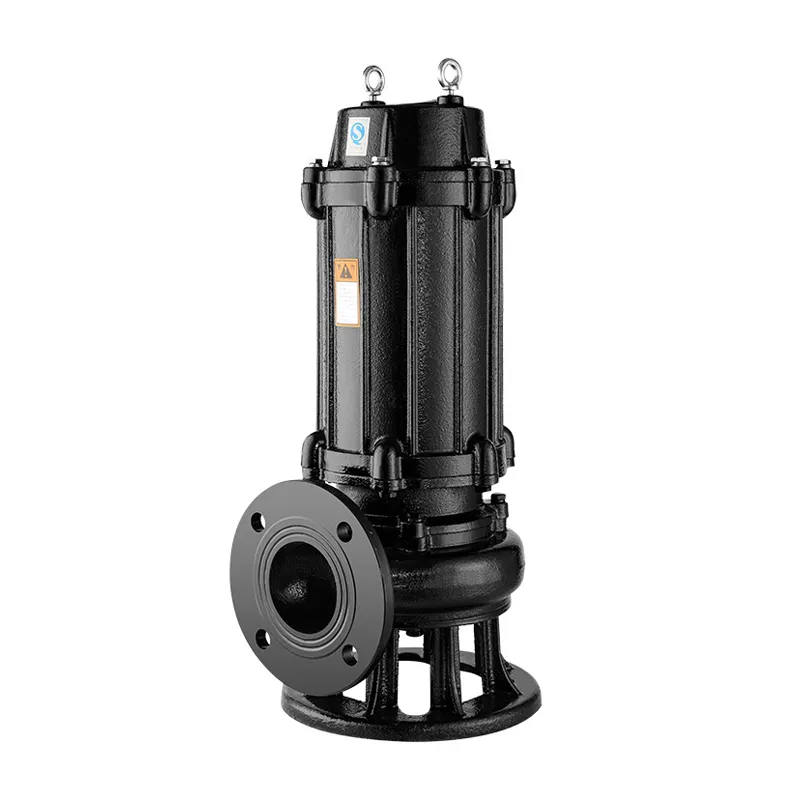Telephone: +86 13120555503
Email: frank@cypump.com
Oct . 21, 2025 12:55 Back to list
Non Clog Sewage Pump | Anti-Blockage, High Flow, Efficient
Field Notes on the Non Clog Sewage Pump: What Actually Works Underground
If you’ve ever stood in a pump room at 2 a.m. (I have, more than once), you learn fast that reliability beats brochure-speak. From Shifo Town, Anguo City, Hebei Province comes the WQ series—an energy-saving, anti-winding, non-clogging submersible that’s been getting whispered kudos from municipal operators. Automatic installation and control are built-in; the aim is less downtime, more flow. Simple idea, big impact.

What’s driving demand now
- Wipes and fibrous loads keep rising—vortex and wide-channel hydraulics matter more than ever.
- Energy scrutiny is real: high-efficiency motors and smart controls pay back surprisingly fast.
- Remote alarms and thermal/sensor packs reduce callouts (operators love their weekends, understandably).
Key specs at a glance
| Model | WQ Series Non Clog Sewage Pump, submersible |
| Flow range | ≈ 10–1500 m³/h (real-world use may vary) |
| Head | ≈ 6–60 m |
| Motor power | 0.75–160 kW, 1450/2900 rpm options |
| Voltage/Frequency | 380–690 V, 50/60 Hz |
| Solids passage | up to 100 mm depending on size |
| Hydraulics | Vortex or single/dual-channel non-clog |
| Materials | Cast iron/ductile iron; optional 304/316 SS impeller; 420/431 SS shaft |
| Seals/Bearings | Dual SiC mechanical seals, C3 bearings |
| Protection | IP68, thermal/overload, leak sensors optional |
| Testing | ISO 9906 acceptance (Grade 2B ≈ standard) |
Non Clog Sewage Pump use-cases we see daily: municipal lift stations, hospital basements, hotels, food processing, textile effluent, mining sumps, stormwater with debris. Many customers say the anti-winding design has been a literal unclog hero during holiday surges.

How it’s built (short version)
- Materials: thick-wall cast/ductile iron volute; epoxy coat; copper stator; SS shaft; SiC/SiC seals.
- Methods: precision-balanced impellers; vacuum impregnation; end-of-line hydraulic test on calibrated bench.
- Standards: ISO 9906 performance, IEC 60529 IP68, IEC 60034 motor efficiency, ANSI/HI 14.6 acceptance.
- Service life: ≈ 8–12 years with routine seal/grease intervals; more in clean stormwater.
- QC: pressure/leak test, insulation ≥ 100 MΩ @ 500 VDC, vibration within ISO 10816 guidance.
Vendor snapshot (real-world notes)
| Vendor | Strengths | Watch-outs |
|---|---|---|
| CY Pump WQ (Hebei) | Solid anti-clog hydraulics, sensible pricing, auto-install rails | Lead times spike during municipal tenders |
| Imported Brand A | Extensive sensor packs, global service | Premium pricing; spares take time |
| Generic Brand B | Low upfront cost | Mixed seal life; documentation thin |
Customization (because no two pits are the same)
- Hydraulics: vortex vs channel impeller; optional cutter ring for fibrous loads
- Materials: 316 SS wetted parts for mildly corrosive streams
- Controls: float/level transducers, soft-start/VFD panels, remote alarms
- Mounting: auto-coupling guide rails, portable pedestal, dry-well variants
Two quick cases
Hotel basement, 2×22 kW: wipes were killing pumps weekly. Swapped to WQ vortex, added rails and a basic panel. Clogs dropped ≈ 90%, energy down ~12% with soft-start. Staff relief was… audible.
Municipal lift station, 75 kW duty/standby: after rainfall peaks, the Non Clog Sewage Pump kept solids moving; ISO 9906 test curves matched field data within ≈3%. Maintenance moved to quarterly checks instead of monthly.

Certifications and data points
- Factory performance tests per ISO 9906 or ANSI/HI 14.6 (Grade 2B typical)
- Ingress protection: IP68 (IEC 60529)
- Motor efficiency aligned with IEC 60034-30-1 classes (IE2/IE3 options)
- CE marking available; routine hydrostatic and insulation tests recorded
Bottom line: a Non Clog Sewage Pump isn’t glamorous, but when the pit foams and alarms chirp, hydraulics and sealing chemistry either save the shift—or don’t. This one, more often than not, does.
References
- ISO 9906:2012 – Rotodynamic pumps — Hydraulic performance acceptance tests.
- ANSI/HI 14.6 – Rotodynamic Pumps for Hydraulic Performance Acceptance Tests.
- IEC 60529:2013 – Degrees of protection (IP Code).
- IEC 60034-30-1:2014 – Efficiency classes of line operated AC motors.
-
High Pressure Pump for Detergent Slurry Manufacturer – Efficient, Durable Solutions | CYPump
NewsNov.24,2025
-
High Cr Volute Liner of Slurry Pump – Durable, Cost-Efficient Wear Solutions
NewsNov.23,2025
-
Find Reliable High Chrome Slurry Pump Suppliers – Durable Solutions for Abrasive Industries
NewsNov.23,2025
-
High Chrome Slurry Pump Factories | Durable Slurry Pumps for Mining & Industry
NewsNov.22,2025
-
Durable and Efficient High Chrome A05 Slurry Pump Volute Liners for Mining & Industrial Use
NewsNov.21,2025
-
Heavy-Duty Slurry Pump – Durable, Efficient Industrial Solutions
NewsNov.20,2025







